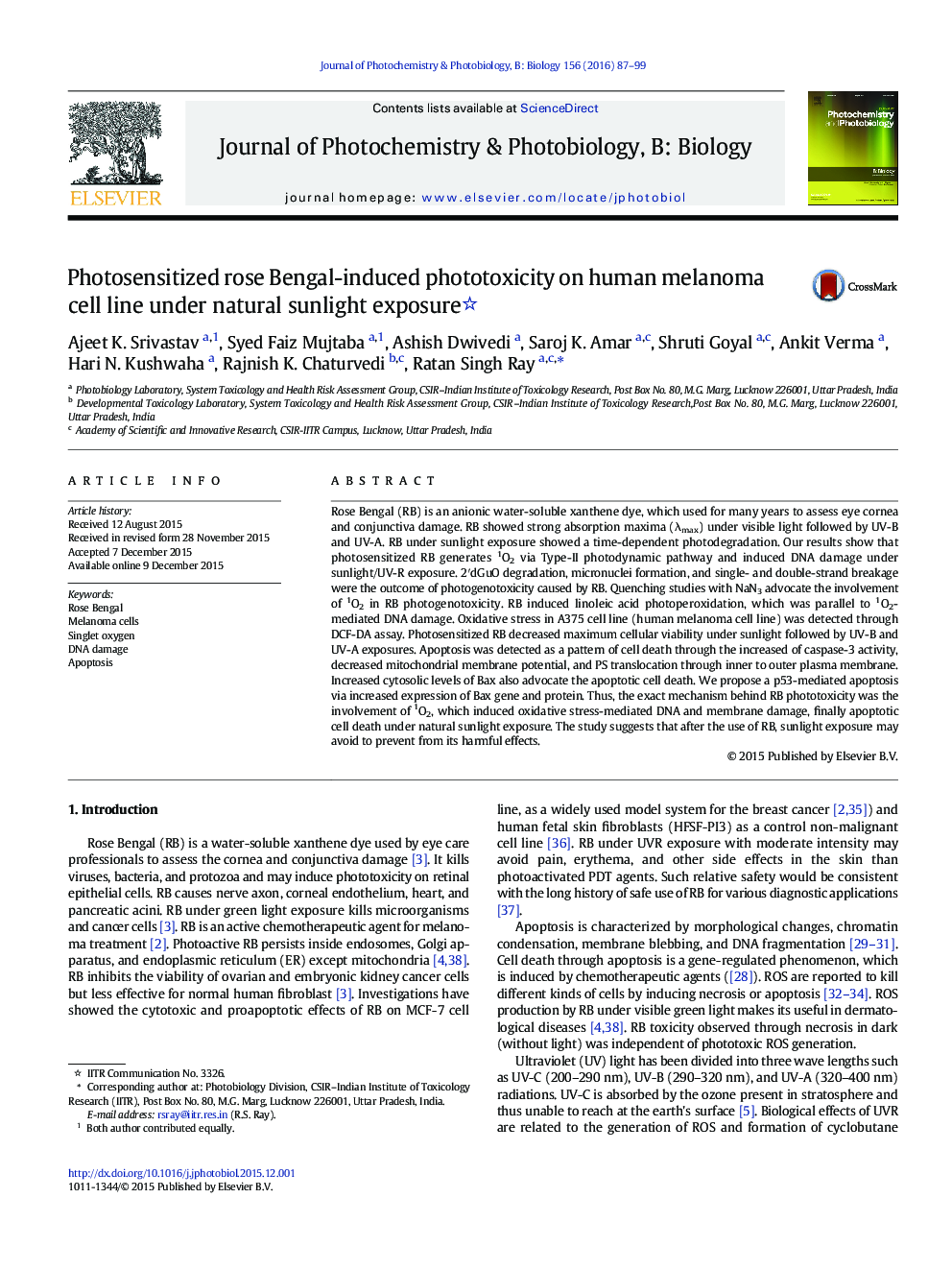| کد مقاله | کد نشریه | سال انتشار | مقاله انگلیسی | نسخه تمام متن |
|---|---|---|---|---|
| 29525 | 44416 | 2016 | 13 صفحه PDF | دانلود رایگان |
• Photomodification of rose Bengal under natural sunlight exposure.
• Phototoxicity of rose Bengal through type-II photodynamic reaction by generating 1O2.
• Role of DNA damage and lipid peroxidation in rose Bengal phototoxicity.
• Photosensitized rose Bengal induced apoptotic cell death.
• Up-regulation of p53 and bax gene expression.
Rose Bengal (RB) is an anionic water-soluble xanthene dye, which used for many years to assess eye cornea and conjunctiva damage. RB showed strong absorption maxima (λmax) under visible light followed by UV-B and UV-A. RB under sunlight exposure showed a time-dependent photodegradation. Our results show that photosensitized RB generates 1O2 via Type-II photodynamic pathway and induced DNA damage under sunlight/UV-R exposure. 2′dGuO degradation, micronuclei formation, and single- and double-strand breakage were the outcome of photogenotoxicity caused by RB. Quenching studies with NaN3 advocate the involvement of 1O2 in RB photogenotoxicity. RB induced linoleic acid photoperoxidation, which was parallel to 1O2-mediated DNA damage. Oxidative stress in A375 cell line (human melanoma cell line) was detected through DCF-DA assay. Photosensitized RB decreased maximum cellular viability under sunlight followed by UV-B and UV-A exposures. Apoptosis was detected as a pattern of cell death through the increased of caspase-3 activity, decreased mitochondrial membrane potential, and PS translocation through inner to outer plasma membrane. Increased cytosolic levels of Bax also advocate the apoptotic cell death. We propose a p53-mediated apoptosis via increased expression of Bax gene and protein. Thus, the exact mechanism behind RB phototoxicity was the involvement of 1O2, which induced oxidative stress-mediated DNA and membrane damage, finally apoptotic cell death under natural sunlight exposure. The study suggests that after the use of RB, sunlight exposure may avoid to prevent from its harmful effects.
Figure optionsDownload as PowerPoint slide
Journal: Journal of Photochemistry and Photobiology B: Biology - Volume 156, March 2016, Pages 87–99
